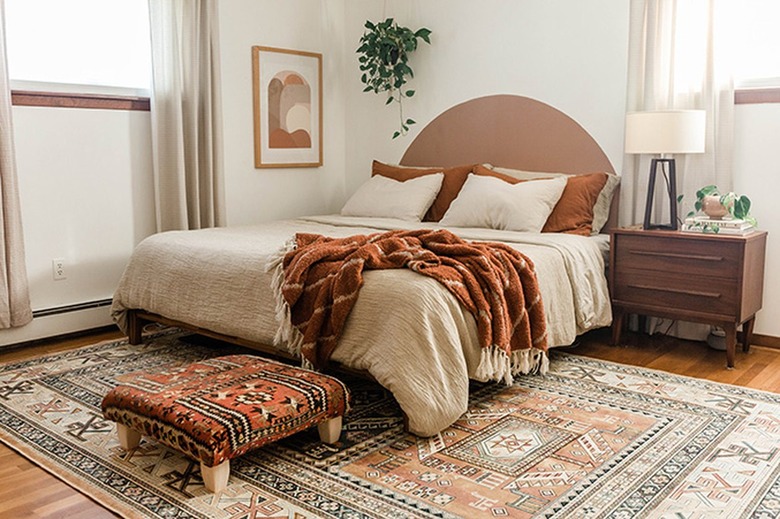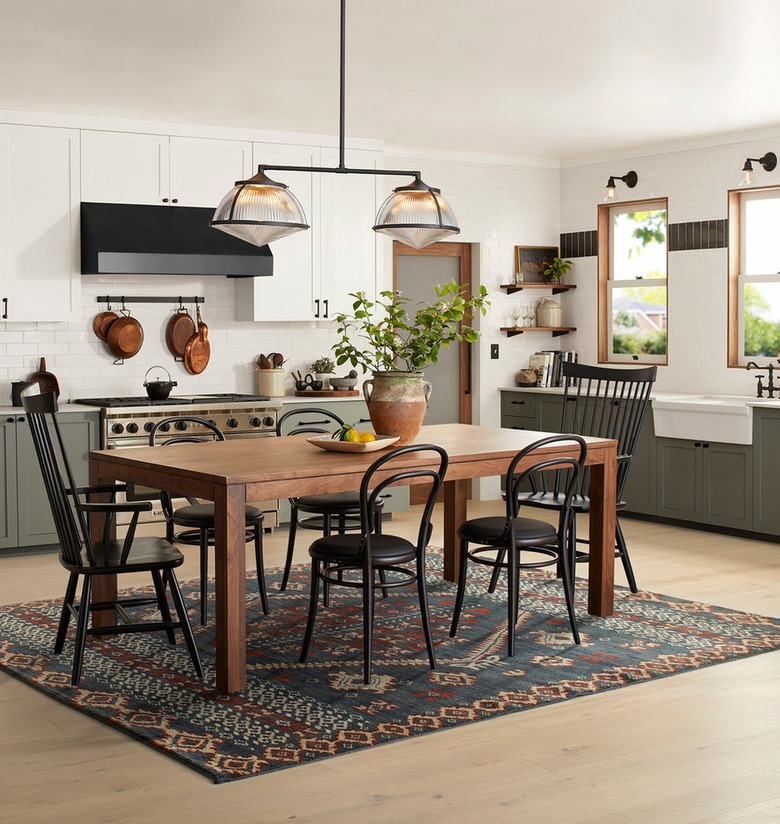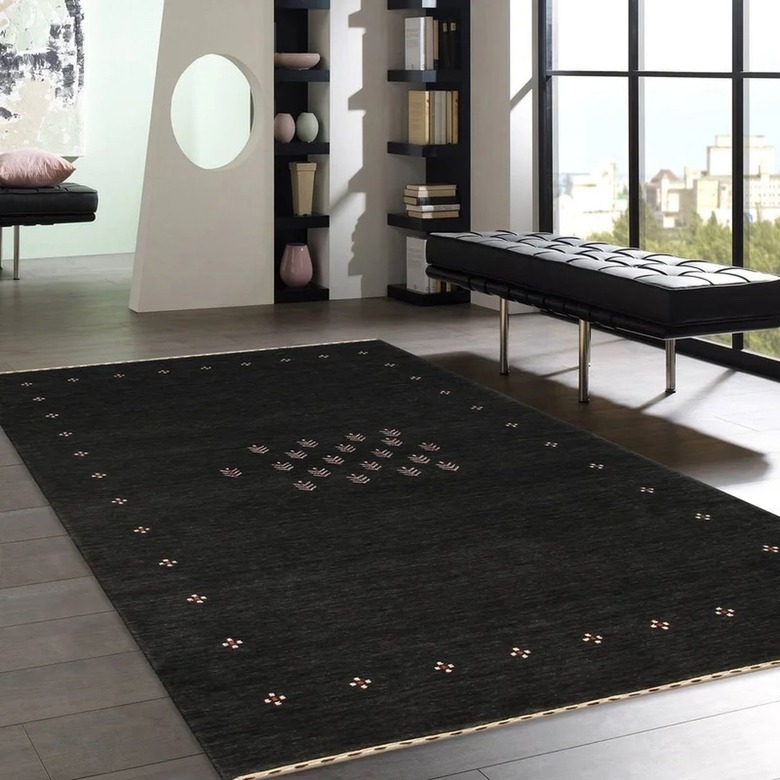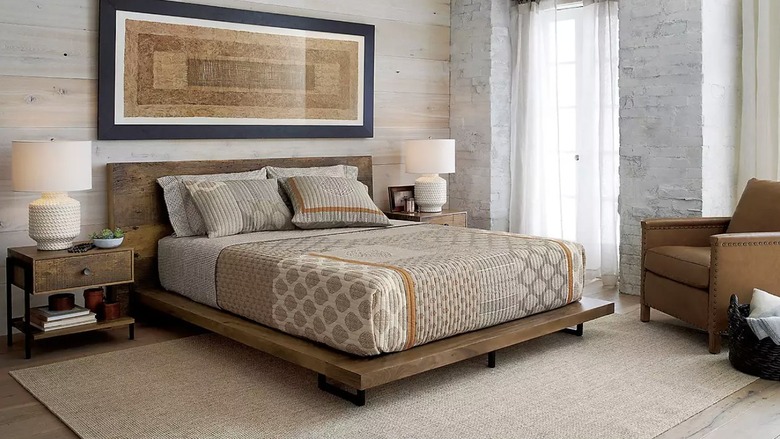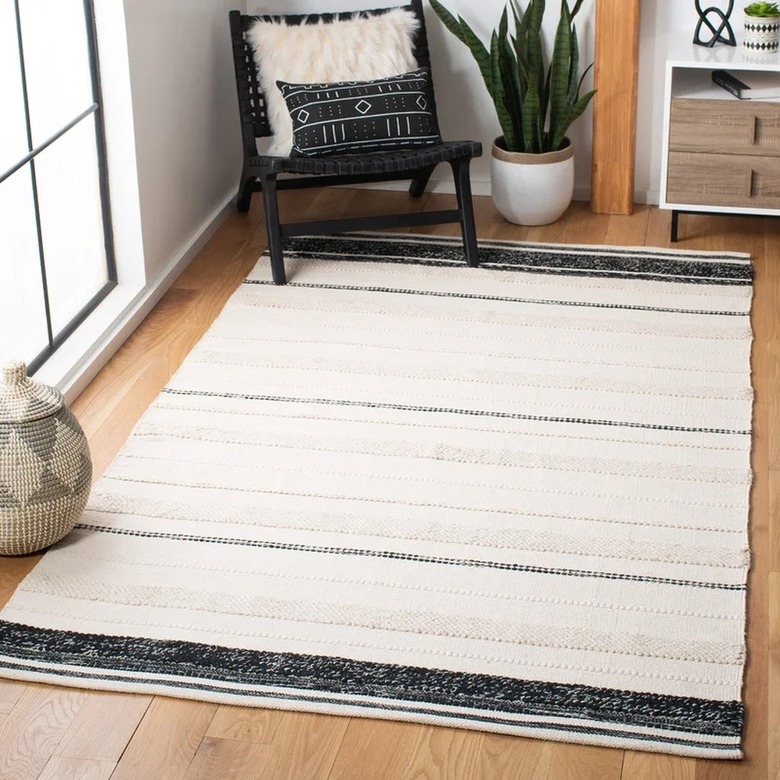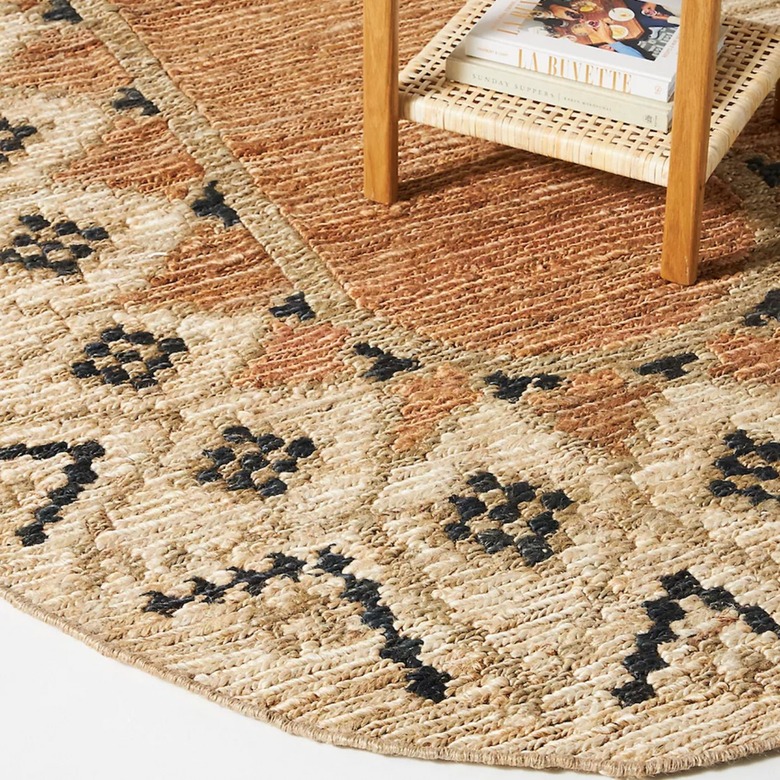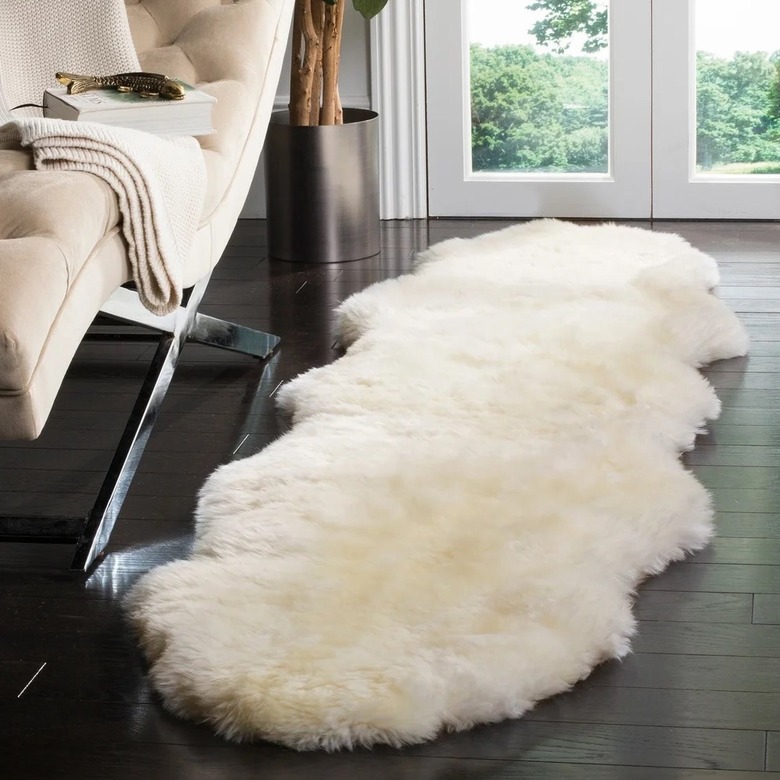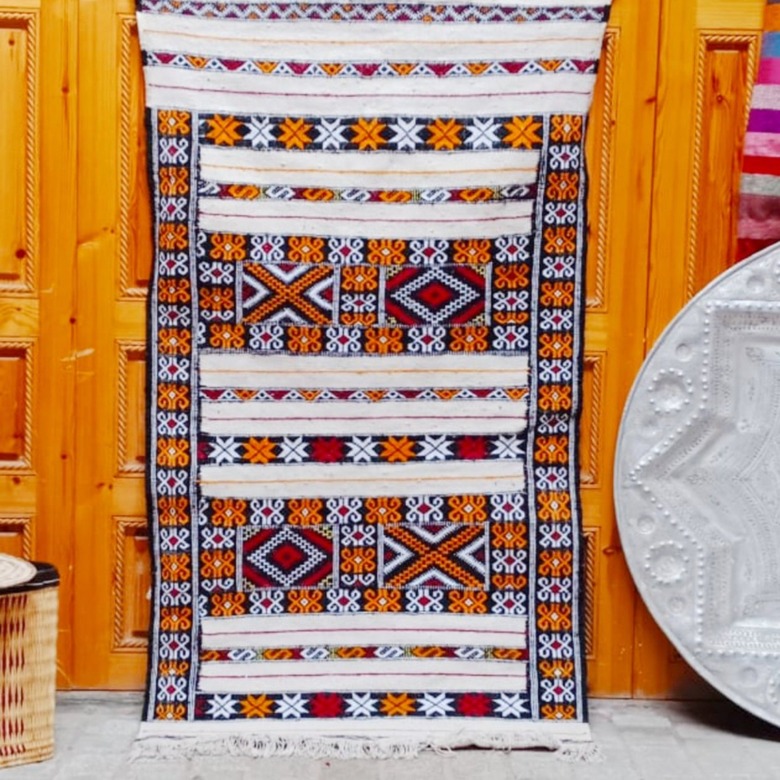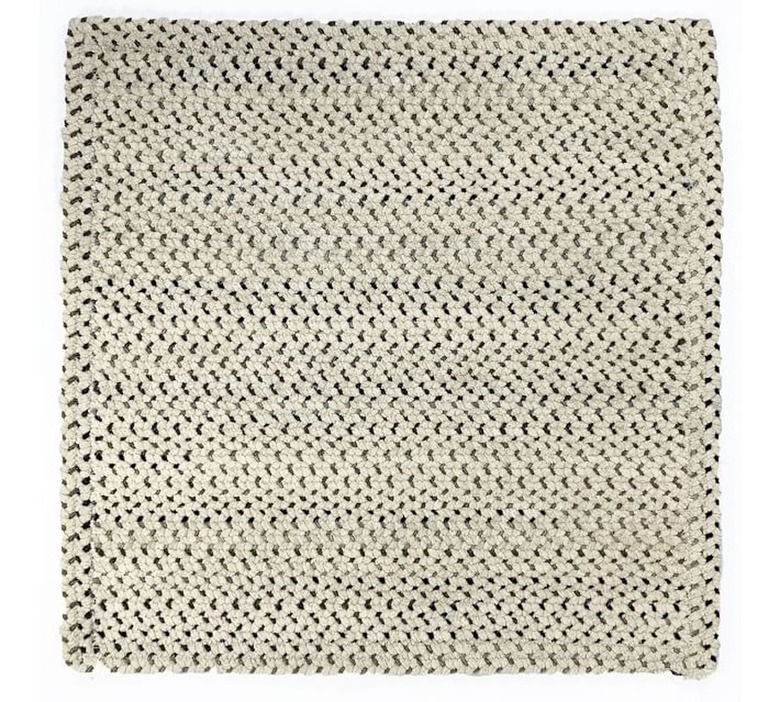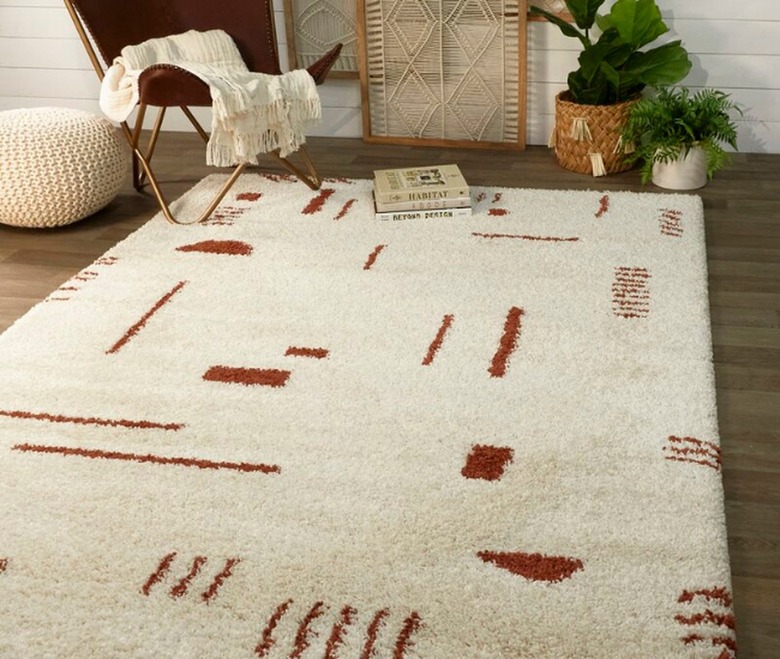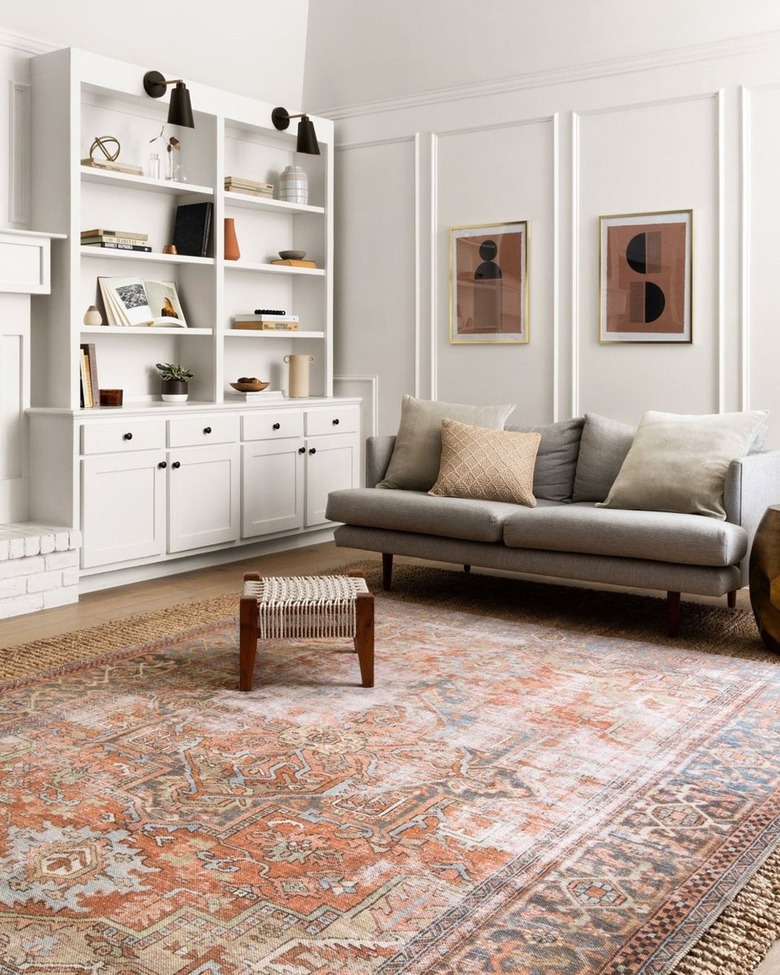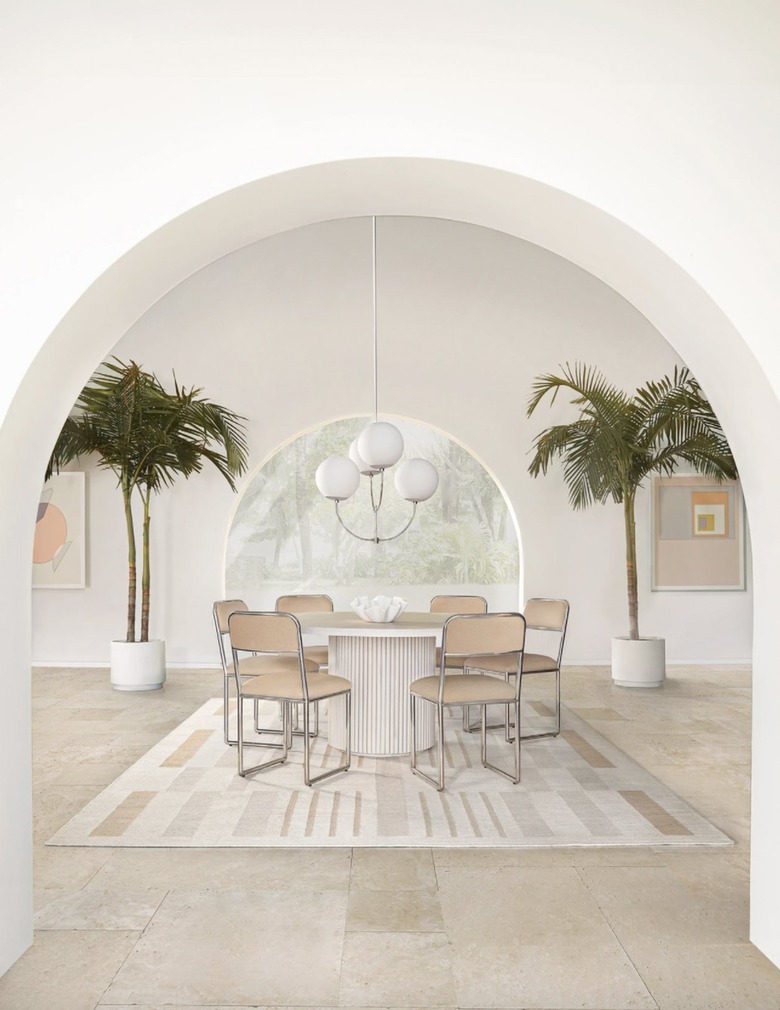Types Of Rugs: A Rug Material Guide For Your Home
We may receive a commission on purchases made from links.
Buying a rug online is, in theory, a no-brainer. But to be shown the perfect rug for your home, you will need to be specific, right down to rug fiber types.
To help you narrow down your search, we suggest scoping out what rug materials hold up best in the room you want to furnish (for example, a silk rug in an entryway is a big no-no). It's a simple shopping hack that does away with questions like "what is a good quality rug made of?" because filtering shopping results by material and the volume of foot traffic guarantees your purchase is a functional and tasteful investment.
With some expert insight from Sharon Gautschi, VP of merchandising at Rugs Direct, we dive deep into the pros and cons of the most common natural and synthetic rug materials.
All things considered, there is no "best" material when rug shopping is solely based on textiles. Keep these key questions in mind: Where will you place your new rug? How much foot traffic does that area of your home see? And lastly, always consider your budget, because a good buy shouldn't make you cringe.
Scroll down for the ultimate rug material shopping guide for your home.
Natural Rugs
Wool
"Wool is considered best-in-class for its beauty, durability, and ease of care," says Gautschi.
These rugs can stain without pretreatment, but after being treated they are easy to clean by either DIY methods or a professional. (We'll leave that decision of how to care for your new rug up to you, the product label, and your wallet.)
Wool rugs age exceptionally, but once the natural coil of the fiber begins to break down, the pile eventually wears away. We still think it's worth the investment, however, since wool rugs have a lifespan of 50 years or more. To compare, synthetic rugs have a lifespan of three to five years, but they have other advantages. Since wool rugs are resilient, they work great in parts of your home that see a good amount of foot traffic.
Gautschi notes that this natural fiber may shed at first, but it will quickly subside. "Let your wool rugs breathe and settle in, and you'll enjoy their many benefits."
Get the look: Rejuvenation Adair Hand-Knotted Rug, $149-$3,299
Silk
Silk rugs will more than likely be presented within a blend. Known for their lustrous shine and reflectivity, silk fibers are commonly used to accent the borders of rugs made from other, more sturdy fibers like wool or cotton. While the fiber is strong and maintains its beauty for a long time, it is porous and stains. You won't want to place a silk rug in an area of your home that sees a lot of foot traffic or spills, as it can lose its glossy beauty prematurely.
You should have these rugs professionally cleaned to avoid damage. The cost for area rug cleaning is determined by material and rug size and includes materials and labor. For silk, the cost will run you around $5-$8 per square foot, the same as cleaning a wool rug. But unlike wool, with proper care and proper placement, it could last for 100 years (and won't shed). Since silk can be costly, admirers of silk rugs might display them on walls, and Persian silk rugs might be placed in areas of the home that won't see a lot of thru traffic.
Get the look: Pasargad Gabbeh Hand-Knotted Striped Area Rug In Black, $680
Linen
Linen is normally a durable fiber, but once woven into a pile, it loses its hardiness and, because of this, linen is predominantly used within blends. What the manufacturer chooses to mix it with gives the rug its more durable characteristics, while still allowing the linen to lend its beautiful coloring to the final product.
Get the look: Crate and Barrel Sisal Linen Rug, from $34.95-$599
Cotton
Cotton rugs are an affordable, durable, and environmentally friendly option. Active family rooms and informal gathering spaces are where cotton shines. If you keep an active household or worry about spills and accidents, a professional rug cleaner only charges around $4-$7 per square foot on a cotton rug.
Moreover, any worrying stains will be offset by the cost since they'll be much less expensive than other durable natural fibers, like wool. It's a sound material and thus a sound purchase for your home. Not to mention, because cotton holds dye so successfully, rug designs can be intricate and vibrant all at an affordable price.
Get the look: Dakota Fields Dorsey Striped Handmade Rug, $42.99-$469.99
Sisal, Jute, Coir, and Seagrass
These natural fiber rugs are best for the eco-friendly shopper who isn't so concerned with longevity. When shopping for a sisal rug, jute rug, coir rug, or even a seagrass rug, you'll be lavished with natural options woven into fun patterns and decorative shapes. They work best if you want to define a specific seating area or as a truly stellar decorative area rug.
Be forewarned that rugs made from these dried fibers will eventually break down and cannot be cleaned without risking damage or discoloration. (So, DIY cleaning should be done at your discretion.) We recommend enjoying these natural rugs while they shine brightly in your home.
Gautschi loves the organic look of these rugs but notes the importance of location. Since the fibers are rather absorbent, they'll develop mold or mildew easily in high moisture environments, such as a bathroom or outdoors. Plus, "all that wonderful texture" leaves plenty of room for dirt and crumbs to get stuck. But have no fear; Gautschi's not willing to part with these natural fiber rugs and you don't have to either. Her pro tip? Use one of these rugs as your base layer, with a more durable material on top.
Get the look: Anthropologie Handwoven Palma Jute Rug, from $78
Leather and Cowhide
Like the patina of an old leather bag, leather and hide rugs age beautifully. Place these rugs at focal points within rooms or as accent pieces to get the most out of your purchase. (Think of a boho-chic sheepskin rug draped cozily over a low-slung midcentury modern chair.) Animal hides are perfect for imparting tantalizing textures and adding depth to your home decor. With proper care and if placed in low-traffic areas, they'll last for a long time to come.
Get the look: Safavieh Solid Sheepskin Rug, $104.99-$739.87
Khampa Wool, Nettle, and Aloe (Cactus Silk)
Sustainability is a high priority for many shoppers. So, to finish up our review of natural rugs, we wanted to include another mini-list: khampa wool, nettle, and aloe rugs. Aloe fiber (also known as cactus silk), for example, is 100% biodegradable and recyclable.
It's important to keep in mind that these are delicate fibers. They work best as hand-knotted rugs and should be placed in areas of your home with low thru traffic.
Get the look: Fatirugsberber Catcus Silk Rug, $128
Synthetic Rugs
Nylon
Nylon is considered the most durable of synthetic carpet fibers. And unlike natural fibers, nylon rugs will hold their texture and sport uniform coloring over a long period of use. There is a trade-off, however; nylon rugs won't feel as great underfoot as a natural fiber would. But when placed in busy areas of your home like hallways, playrooms, and stairs, choosing a nylon rug becomes a sound addition to your home. Why spend big bucks for a hand-knotted wool rug to place in a playroom and watch it (and your money) go to rack and ruin much too soon?
We think it's comforting to know nylon rugs resist soil and mildew. Even if they aren't inherently stain-resistant, they can be pretreated to decrease staining. We almost forgot to mention the best part — when you are ready to replace or refresh your home decor, you can recycle your nylon rug.
Get the look: Pottery Barn Brigitte Square Braided Rug, $249
Polypropylene
Olefin or polypropylene rugs have excellent stain resistance. They're also resistant to wear and tear, but they are not fiber-resilient. Low resilient fibers essentially mean that laying heavy furniture on top of your rug will leave its mark, since olefin fibers have a low ability to recover from crushing or deformation. The trade-off is that polypropylene feels a lot like wool and does well in most weather conditions.
If you want to place your olefin rug in a high traffic area of your home, look for either a tighter weave with (higher surface density) or for it to be crafted as a low pile loop rug to avoid deformation. If you have your eye on a shag or chunky woven polypropylene rug, place it in areas like your living room or bedroom.
Get the look: AllModern Geometric Shag Area Rug, $109
Polyester
Polyester rugs should be placed in low-traffic areas of your home. This synthetic material has low resilience and will eventually show some deformation from heavy footfall and soil carried in from outside or house plants. Water-based stains will be relatively easy to eradicate from your new rug, but oils are a different story. That includes natural oils from our skin, guaranteeing that walking barefoot eventually leaves a trail of accumulated foot (oil) prints. Yikes.
But let's talk about the benefits. Polyester rugs feel great, you might even prefer them. While natural fibers are often praised for their great hand, some individuals instead find them itchy and scratchy.
It is also a versatile fiber to work with; there's almost no compromising when style hunting. Rugs made of polyester come in all sorts of vibrant colors, weaves, and piles. We recommend polyester rugs for those with a low rug budget. At around $1 per square foot, polyester rugs are a steal.
Get the look: Loloi II Rugs Loren Printed Area Rug, $53.40-$462.00
Viscose
While a silk Persian rug can cost a small fortune, a viscose rug offers a similarly sleek alternative for a fraction of the price. Not only is it easier on your pocket, but viscose fibers also hold up under moderate foot traffic. With that said, these rugs are notoriously hard to maintain. The material can't really get wet (over-saturating the rug will wear these synthetic fibers down) and Gautschi advises professional cleaning. Therefore, she wouldn't recommend it if you have kids or pets. Still, you can place a viscose rug in a good many areas of the home — just be sure to keep it away from fireplaces (and other areas of high heat).
And a final pro tip: Gautschi would opt for a small percentage of viscose mixed in with other materials, like wool, adding a little softness and brightness to the rug. "You still need to be careful, but it's much more manageable."
Get the look: Lulu and Georgia Safi Rug, $98-$2,568
